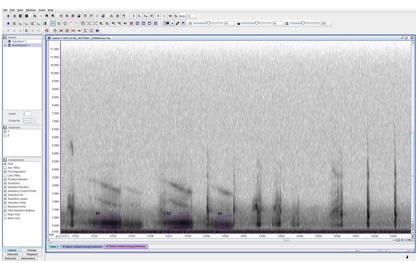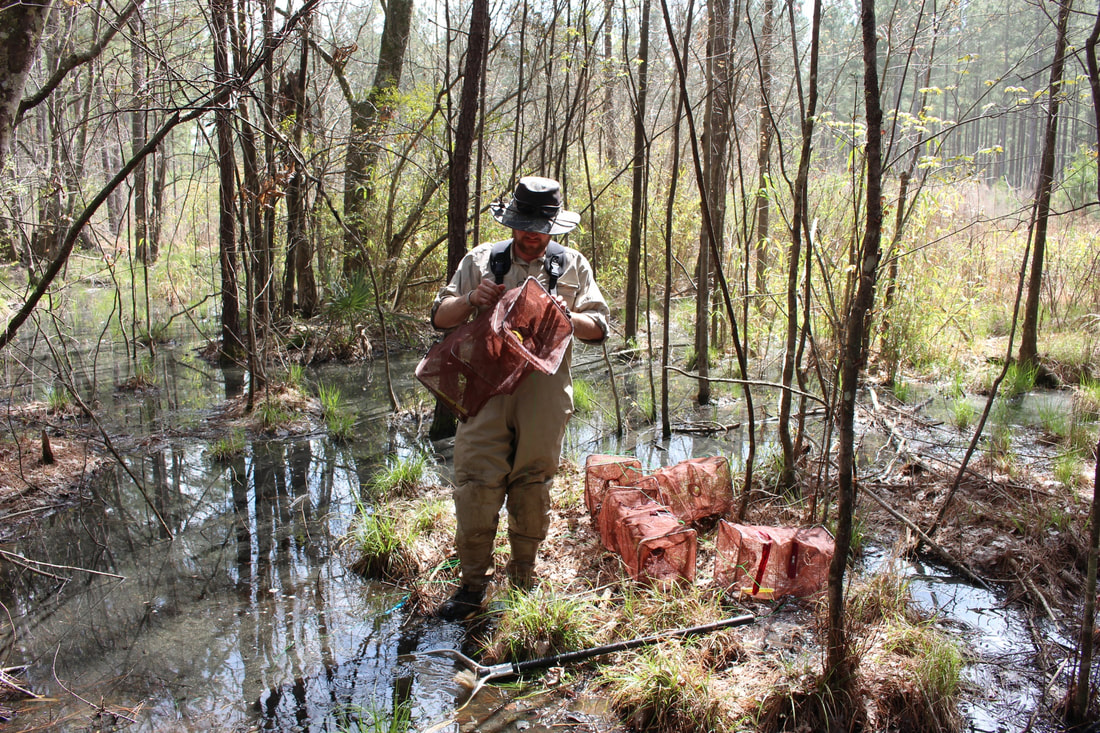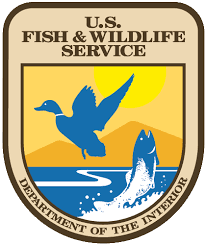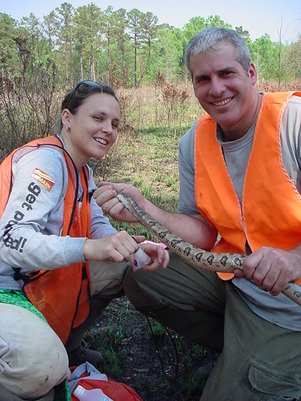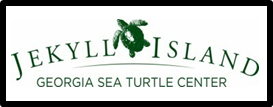Long-term Eastern Diamondback Rattlesnake Monitoring
Post-Translocation Southern Fox Squirrel MonitoringIn 2016 and 2017, Southern fox squirrels (SFS; Scurius niger niger) were translocated to coastal South Carolina with the goal of establishing a viable population. Since then, we have used long-term mark-recapture and telemetry to evaluate population demography and movement. Current and past research projects include:
John D. Holloway [1], Dr. Shannon Carmichael [2] [1] Natural Resources and Environmental Affairs Office, Marine Corps Recruit Depot, Parris Island, SC 29905, USA [2] Sea Island Animal Hospital, 40 Professional Village Cir, Beaufort, SC 29907 Student Participants: Casey Hitchens, Maya Fink, McKenzie Merritt, Sarah Ebert, Emily Gray Funding for this research was provided by DoD Legacy, Natural Resources and Environmental Affairs Office (Marine Corps Recruit Depot Parris Island) Modeling the Extirpation of Carolina Gopher Frogs in South Carolina
In light of Carolina Gopher Frog (Rana capito) population declines and the species’ review for federal protection under the Endangered Species Act, we initiated an acoustic monitoring program at historical gopher frog breeding locations in South Carolina. In collaboration with the South Carolina Department of Natural Resources and with support of the United States Fish and Wildlife Service, the goals of the current study are to use remotely sensed acoustic anuran call data and gopher frog absence from historical breeding sites to assess extirpation at a regional scale.
Long-term Amphibian and Reptile Monitoring in the South Carolina Coastal Plain
Student Participants:
Marshall University Herpetology & Applied Conservation Lab: Kelli Herrick, Marcie Cruz, Elise Edwards, Derek Breakfield, Brian Williams, Nate Shepard, and Kevin Messenger. University of South Carolina: Jennifer Fill and Mike Martin Funding for this project was provided by South Carolina DNR, Riverbanks Zoo and Garden, National Wildlife Federation, and The Gopher Tortoise Council. |
|
The Marshall University Herpetology and Applied Conservation Lab acknowledges the following organizations for supporting our South Carolina research projects.




